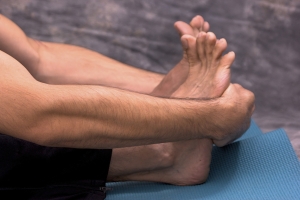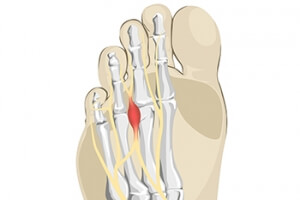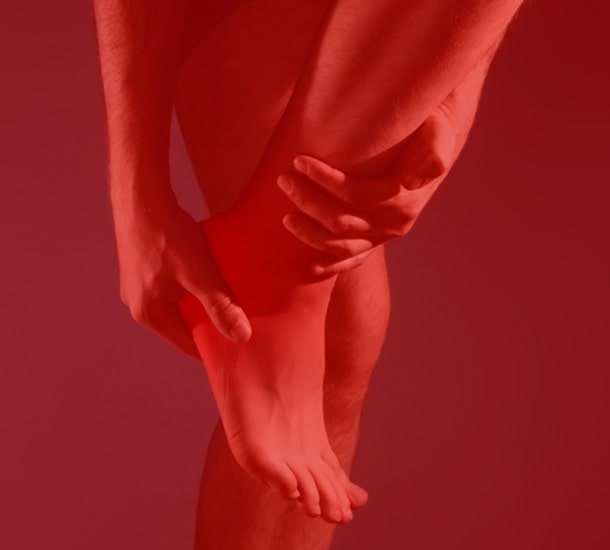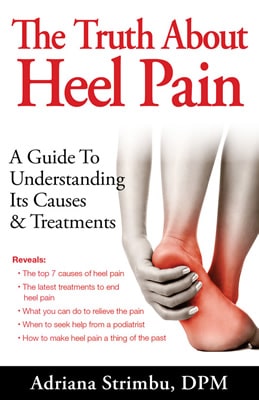Connect With Us
Blog
Displaying items by tag: Foot and Ankle Pain
Custom Made Orthotics: What are they? How are they different? How they help you? Who can benefit from them? And much more
 Custom made orthotics are not the same as store bought orthotics or insoles that you buy over the counter. They may look the same, but they are different. If you are not familiar with custom made orthotics, I will explain here:
Custom made orthotics are not the same as store bought orthotics or insoles that you buy over the counter. They may look the same, but they are different. If you are not familiar with custom made orthotics, I will explain here:
- What they are?
- How they are different?
- What kind/ type of custom orthotics are there?
- How they help you?
- How they may help avoid surgery?
- Who can benefit from them?
- What kind of foot problems can they help?
What are custom made orthotics?
Custom made orthotics are prescription shoe insoles that are made exactly for your foot type and shape using a mold or 3D scan of your feet. They are unique to your own feet. An impression of your feet is obtained, which is then sent to the laboratory for fabrication.
How are custom made orthotics different from store orthotics or insoles?
Custom made orthotics are made to perfectly fit to your feet. This allows best support to your feet, better balance, and better function during your daily activities such as walking and running. Custom made orthotics can be compared to prescription eyeglasses as opposed to over-the-counter eyeglasses. They are prescribed and made exactly from a mold of your feet.
Another, important thing to note is that store bought orthotics wear out quickly. Custom made orthotics will last you a minimum of 3 years. In many instances they can last as much as 5 years depending on how much they are being used. Over the counter orthotics usually wear out within about 6 months.
What kind of custom-made orthotics are there?
There are two types of custom-made orthotics which are functional and accommodative. The functional custom-made orthotics are usually more rigid, and their primary function is to support and correct abnormal motion within the feet. The accommodative custom orthotics are usually softer, mainly used for diabetics and those patient with sensitive feet, and their function is primarily to help protect the feet which also helping with support.
Then you have different lengths of orthotics. For example, you can have ¾ length orthotics which run from the heel to the ball of the foot, or you can have full length orthotics which cover the entire sole of the foot. The ¾ length orthotics are usually used for dressier shoes where you cannot afford to put a full length orthotic because if you do then your shoe will be too tight and uncomfortable. And usually, the ¾ length orthotics are used in men dressy shoes.
Another way we can classify orthotics is by the type of material used or their thickness. We cannot use the same type of orthotic for a marathon runner as we would use for a woman who goes to work in high heels and sits at a desk the whole day. These 2 patients are different. One is more active and will need more support and the other is sedentary. Also, one uses a sneaker and the other uses a high heel shoe. The patients who use the orthotic in a sneaker will need a different kind of orthotic, one which is thicker and more rigid. The patient using the high heel shoes will be needing a thinner orthotic so that it would fit in the dressy shoe but at the same time also provide support.
How do custom orthotics help you?
Here are some ways that custom orthotics can help you:
- Relieve pain.
- Prevent injury.
- Correct your walking pattern and foot deformity.
- Effective and efficient foot support.
- Enhance athletic performance.
- Better health.
How do custom made orthotics may help you avoid surgery?
Custom made orthotics may help you avoid surgery for many foot problems such as bunions, hammertoes, heel pain, and many more. The way they do that is by redistributing pressure on the feet and preventing abnormal motion and thus preventing progression of the deformity and decreasing the pain.
Who can benefit from custom made orthotics?
When it comes to who can benefit from custom made orthotics, the answer is anyone could benefit from them. Custom made orthotics can only help you and you cannot go wrong using them. They can only help you. Your feet do not have to be hurting for you to start wearing custom made orthotics. Because pain free feet do NOT mean problem free feet. You can have biomechanical imbalance or foot deformity which do not cause other problems and mal alignment within the body. Custom made orthotics help support your feet and correct your imbalance.
They are recommended to patients of all ages from kids to adults. The earlier you catch and treat a biomechanical problem in the feet, the better the changes to correct it and prevent it from getting worse. The main role of the custom-made orthotics is to prevent abnormal motion and imbalance within the feet and thus prevent biomechanical problems, pain and injury.
Others who can benefit from custom made orthotics are diabetics, runners and athletes who play sports such as volleyball, football, soccer, baseball, tennis, etc. Also, any personal that spends a lot of time on their feet such as mailman, UPS or Fedex workers, hospital personal such as nurses and doctors. Orthotics are also important in any person who is overweight and in pregnant women.
What kind of foot problems can be helped by custom made orthotics?
Custom made orthotics can help many foot problems such as:
- Plantar fasciitis is inflammation of the ligament on the bottom of the feet which connects the heel bone to the toes.
- Heel spur is extra bone formation at the bottom of your heel bone due to the tight plantar fascia.
- Achilles tendonitis is inflammation of the Achilles tendon, a tendon in the back of your lower leg.
- Posterior Tibial tendonitis is inflammation of the posterior tibialis tendon on the inside of the foot.
- Peroneal tendonitis is inflammation of the peroneal tendon found on the outside of the foot and ankle.
- Achilles enthesopathy is spur formation to the back of the heel bone.
- Morton’s neuroma is a tangle of nerves within the third intermetatarsal space.
- Bunion (Hallux Valgus) is bony bump at the first metatarsal phalangeal joint.
- Hammertoe is contraction (bending) of the toe.
- Metatarsalgia is pain and inflammation in the ball of the foot due to overuse and fat atrophy.
- Tarsal tunnel syndrome is compression of the posterior tibial nerve in the inside of the ankle.
- Baxter Neuritis is compression of the first branch of the lateral plantar nerve into the heel.
- Calcaneal apophysitis (Sever’s disease) is painful inflammation of the heel’s growth plate in children.
- Sinus tarsi syndrome is pain and inflammation within the lateral aspect of the foot, within the sinus tarsi.
- Osteoarthritis is most common form of arthritis. It occurs when the cartilage at the end of the bones is worn out causing pain and inflammation.
- Diabetic foot or neuropathic foot can also benefit from custom orthotics for protection and support.
- Corns and calluses are hard skin formations of the feet which are usually caused by high pressure on the feet.
- Ankle sprain is stretching or tearing of the ankle ligaments. Most often it is the lateral ankle that gets the most sprains.
- Capsulitis is inflammation and damage within the joint capsule and/or surrounding area. Most affected within the foot is second metatarsal phalangeal joint.
- Pronation is natural movement of the foot as it rolls inward. Flat feet occur when there is too much pronation and rolling inward of the feet causing the medial longitudinal arch to collapse.
- Supination is rolling motion to the outside edge of the foot during walking. It is the opposite of pronation.
- In-toeing is a condition where a child foot points inward instead of straight.
- Out-toeing is a condition where a child foot points outward instead of straight.
- Limb length deformity is when one leg is longer than the other.
Why the price difference between the custom-made orthotics and over the counter insoles?
The difference in the price between the two has to do with customization of the custom-made orthotics. The customization of the custom-made orthotics starts with the examination of the feet, time to take exact impression of the foot, molding or 3D scanning, the material used and the specifications needed to make the them. All of these contribute to the price of the custom-made orthotics. But the custom-made orthotics last longer and are more effective and efficient.
If you are interested to find out more how custom-made orthotics can help you, please contact us at Adriana Strimbu, DPM, PA to schedule an appointment. You can call us at 954-455-9404 for appointment or more information.
Plantar Fasciitis
The plantar fascia is a connective tissue in the heel that stretches across the bottom length of your foot. Plantar fasciitis occurs when the connective tissue becomes inflamed, causing heel pain and discomfort during physical activity. Although the condition is completely treatable, traditional methods can take up to a year to start becoming effective.
Plantar fasciitis is caused by a number of everyday activities, so understanding the condition is important for managing and treating it. One of the most common causes of plantar fasciitis is excessive running, especially with improper fitting or non-supportive shoes. Too much exercise can lead to the plantar fascia being overworked and overstretched, which can cause tears in the tissue. Along with improper fitting shoes, pronation, the rolling of the feet inward, is a common cause of plantar fasciitis. If not treated properly, the plantar fascia becomes overstretched and starts to tear, causing inflammation.
Despite the common causes of plantar fasciitis, there are many different treatment options. For less severe cases, conservative home remedies include taking anti-inflammatory drugs to alleviate pain, applying ice packs to the bottom of your foot and heel, slowly stretching and exercising your feet to re-strengthen the tissue, and using orthotic devices are all ways to help manage your plantar fasciitis.
For more severe cases, shockwave therapy has become a common solution for plantar fasciitis. Shockwave therapy can effectively break up the tissue on the bottom of your foot which facilitates healing and regeneration. This fights the chronic pain caused by plantar fasciitis. Even if this doesn’t work, surgery is always a final option. Surgery on the tissue itself can be done to permanently correct the issue and stop the inflammation and pain in your heels.
No matter what the case may be, consulting your podiatrist is the first and best step to recovery. Even the slightest amount of heel pain could be the first stage of plantar fasciitis. Untreated symptoms can lead to the tearing and overstretching of tissue. Because the tearing of tissue can be compounded if it remains ignored, it can evolve into a severe case. The solution is early detection and early treatment. Talk to your podiatrist about the possibilities of plantar fasciitis if you’re experiencing heel pain.
Welcome
Welcome to the Blog of Adriana Strimbu DPM
Whether you are an existing patient or searching for a podiatrist in the Hallandale Beach area, we're excited you are here. With the podiatry industry advancing, we recognize the importance of keeping our patients and visitors up to date with all of the new and exciting things taking place in our practice.
As we move forward with our blog, we hope to promote podiatric awareness as a vital part of your healthy, active lifestyle.Here you will find a variety of articles and topics including the latest developments in podiatry, podiatric treatments and helpful foot care advice from Dr. Adriana Strimbu DPM and her staff.
We hope you find our blog to be helpful, engaging and informational to ensure the long-term health of your feet.
As always, feel free to contact us with any questions or concerns.
-- Dr. Adriana Strimbu DPM
Stretches Helpful for Heel Spurs
 If you have heel spurs, bony outgrowths on the heel bones that can poke against the soft tissues in the heels and cause pain, doing simple foot stretches regularly can be very helpful for symptom relief. Before getting out of bed and taking your first steps of the day, try doing ankle pumps by sitting on the edge of your bed with your feet flat on the floor and then lifting your toes upwards while keeping your heels on the ground. Then bring the toes to the floor and lift your heels up. Repeat 15 times for best results. For more information about treating heel spurs, please consult with a podiatrist.
If you have heel spurs, bony outgrowths on the heel bones that can poke against the soft tissues in the heels and cause pain, doing simple foot stretches regularly can be very helpful for symptom relief. Before getting out of bed and taking your first steps of the day, try doing ankle pumps by sitting on the edge of your bed with your feet flat on the floor and then lifting your toes upwards while keeping your heels on the ground. Then bring the toes to the floor and lift your heels up. Repeat 15 times for best results. For more information about treating heel spurs, please consult with a podiatrist.
Stretching the feet is a great way to prevent injuries. If you have any concerns with your feet consult with Adriana Strimbu, DPM from Complete Foot & Ankle Care. Our doctor will assess your condition and provide you with quality foot and ankle treatment.
Stretching the Feet
Being the backbone of the body, the feet carry your entire weight and can easily become overexerted, causing cramps and pain. As with any body part, stretching your feet can serve many benefits. From increasing flexibility to even providing some pain relief, be sure to give your feet a stretch from time to time. This is especially important for athletes or anyone performing aerobic exercises, but anyone experiencing foot pain or is on their feet constantly should also engage in this practice.
Great ways to stretch your feet:
- Crossing one leg over the others and carefully pull your toes back. Do 10-20 repetitions and repeat the process for each foot
- Face a wall with your arms out and hands flat against the wall. Step back with one foot and keep it flat on the floor while moving the other leg forward. Lean towards the wall until you feel a stretch. Hold for 30 seconds and perform 10 repetitions for each foot
- Be sure not to overextend or push your limbs too hard or you could risk pulling or straining your muscle
Individuals who tend to their feet by regular stretching every day should be able to minimize foot pain and prevent new problems from arising.
If you have any questions, please feel free to contact our office located in Hallandale Beach, FL . We offer the newest diagnostic and treatment technologies for all your foot care needs.
What Is Morton's Neuroma?
 A Morton’s neuroma is the swelling and inflammation of a nerve that occurs between the third and fourth metatarsal bones in the foot. Morton’s neuroma usually causes a burning, stabbing or shooting pain in the ball of the foot and toes because the nerve gets trapped. Wearing tight fitting shoes, like high heels, can play a role in causing this condition, and continuing to wear the shoes can worsen the pain as well. Morton’s neuromas can also cause tingling and numbness in the feet and the feeling of a small stone stuck under the foot. If you think the pain in the ball of your foot that may be a Morton’s neuroma, consulting with a podiatrist for a proper diagnosis and treatment is a good idea.
A Morton’s neuroma is the swelling and inflammation of a nerve that occurs between the third and fourth metatarsal bones in the foot. Morton’s neuroma usually causes a burning, stabbing or shooting pain in the ball of the foot and toes because the nerve gets trapped. Wearing tight fitting shoes, like high heels, can play a role in causing this condition, and continuing to wear the shoes can worsen the pain as well. Morton’s neuromas can also cause tingling and numbness in the feet and the feeling of a small stone stuck under the foot. If you think the pain in the ball of your foot that may be a Morton’s neuroma, consulting with a podiatrist for a proper diagnosis and treatment is a good idea.
Morton’s neuroma is a very uncomfortable condition to live with. If you think you have Morton’s neuroma, contact Adriana Strimbu, DPM of Complete Foot & Ankle Care. Our doctor will attend to all of your foot care needs and answer any of your related questions.
Morton’s Neuroma
Morton's neuroma is a painful foot condition that commonly affects the areas between the second and third or third and fourth toe, although other areas of the foot are also susceptible. Morton’s neuroma is caused by an inflamed nerve in the foot that is being squeezed and aggravated by surrounding bones.
What Increases the Chances of Having Morton’s Neuroma?
- Ill-fitting high heels or shoes that add pressure to the toe or foot
- Jogging, running or any sport that involves constant impact to the foot
- Flat feet, bunions, and any other foot deformities
Morton’s neuroma is a very treatable condition. Orthotics and shoe inserts can often be used to alleviate the pain on the forefront of the feet. In more severe cases, corticosteroids can also be prescribed. In order to figure out the best treatment for your neuroma, it’s recommended to seek the care of a podiatrist who can diagnose your condition and provide different treatment options.
If you have any questions, please feel free to contact our office located in Hallandale Beach, FL . We offer the newest diagnostic and treatment technologies for all your foot care needs.







